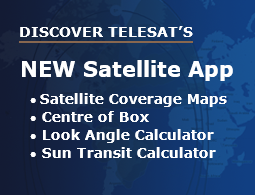The U.S. Navy is working hard to deploy 5G radios and connectivity on its ships at sea. According to a recent article in Mobility Engineering, one objective is to improve shipboard quality of life and work, collectively known as Quality of Service (QoS). The U.S. Navy has several other objectives for deploying 5G capabilities to the Fleet.
Providing consistent, high-quality, global connectivity to Navy vessels has always been challenging. Ships are deployed globally and must be able to change their theater of operations at a moment’s notice. The Navy also doesn’t want to advertise where its ships are at any given time.
The U.S. Naval Information Warfare Center (NIWC) has made significant advances in recent years in 5G testing. Since 2021, NIWC Atlantic has been using the USS Wisconsin, an Iowa-class battleship that is now a functioning museum ship ported in Norfolk, VA, as a test lab. Engineers deployed a private 5G core, testing coverage, and performance throughout the ship’s interior. They found that 5G propagation within interior spaces was excellent and consistent with prior testing.
Enterprise-class low-earth orbit (LEO) satellite connectivity is perfect for this use case. 5G enabled by LEO is especially beneficial for organizations like the Navy with far-flung locations that can’t access fibre connectivity. Enterprise-class LEO networks, such as the Telesat Lightspeed constellation, provide low-latency connectivity—30-50 milliseconds for a roundtrip radio frequency signal between the ground and satellite. This means Private 5G can support more data and devices, taking advantage of all the data produced onboard.
LEO provides robust and resilient backhaul connectivity to connect each Navy vessel to shore or another vessel. A key differentiator of 5G networking compared to 4G/LTE is the ability to support network slicing, where applications and data traffic are segmented based on priority. For example, in its Private 5G network, the Navy could prioritize shipboard monitoring and mission communications ahead of crew morale and welfare communications. Advanced LEO networks like Telesat Lightspeed can maintain the network slicing in the backhaul link.
LEO also offers the Navy far more flexible options than current GEO systems. Rather than purchasing static connectivity tied to specific geographic regions, Telesat Lightspeed can provide the Navy with a global capacity pool, and they can control the bandwidth allocations and service prioritizations without contacting the satellite network operations center. Additionally, using the optical inter-satellite links on each Telesat Lightspeed satellite allows the Navy to directly connect to a shore-based HQ without landing traffic at any intermediate ground station.
This same flexibility could be crucial to providing ship-to-ship communications when there is no ship-to-shore/shore-to-ship connectivity. The Navy anticipates that communication with a shore HQ might not be available in a conflict. LEO-enabled 5G would allow a deployed ship to act as the base of the private 5G network, maintaining high-speed communications with other ships.
Autonomous ships are another innovation that depends on seamless, low-latency connectivity. Early this year, the U.S. Navy completed its first deployment of four unmanned ships, which spent five months in the Pacific testing how to integrate their capabilities into broader fleet operations. To implement remote control, autonomous ship control will require the higher throughput, lower latency, global coverage, and higher resiliency LEO provides.
This is precisely what Telesat Lightspeed was designed to provide. Unlike other consumer broadband LEO designs, Telesat will offer guaranteed committed information rates and SLAs.
Enterprise-class LEO is like a fibre network in the sky, making 5G connectivity available wherever and whenever required. This combination is a powerful solution for enabling Navy innovation today and in the future.




